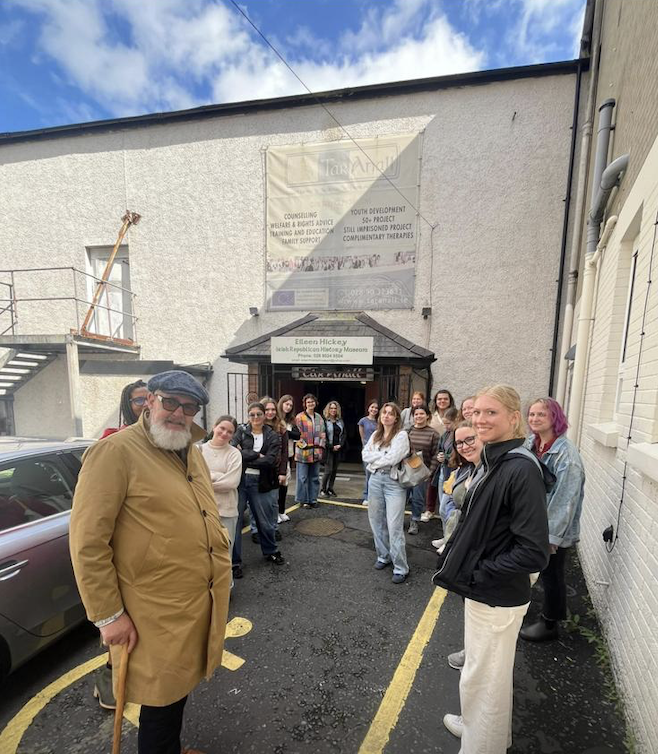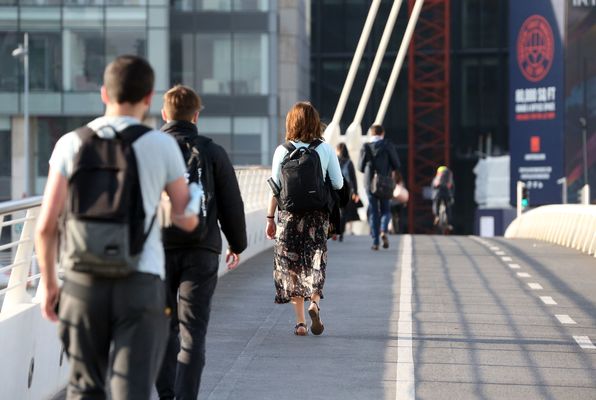ON a crisp, bright morning, I recently lead a group of 18 Texan students through the historic streets of West Belfast, a journey through the heart of a community which is marked by both resilience and memory. These young Americans, wide eyed and eager, were about to encounter a piece of history that, to me, was not just a museum but a living testament to the stories of our people – the Eileen Hickey Republican Museum.
As we approached the museum, which is just a short walk from the iconic International Wall, I felt a deep sense of connection. The wall itself is a canvas of resistance, adorned with murals that tell the tales of struggle and solidarity, but the museum we were about to enter holds an even more personal significance.
The Eileen Hickey Republican Museum might be modest in size, but its walls are heavy with the weight of history. It houses an extensive collection of artefacts that chronicle the turbulent years of the Troubles, a period that shaped not only the North of Ireland but the lives of everyone within it. Yet, what struck me most was that this place was not merely that it is a repository of the past, but that it is a living memory, breathing with the spirit of those who fought, suffered, and endured.
As the wonderful Susan Hickey, sister of Eileen, guided the students through the exhibits, explaining the significance of each item, from the weapons to the prisoner handicrafts, I shared a story that bridged my own life and the history on display. Eileen Hickey, the museum’s namesake and a leading figure in Cumann na mBan, was the wife of Johnny Haddock, who is the older brother of one of my closest childhood friends, Tommy Haddock. This personal connection to the museum and its namesake made the experience all the more profound.
During our conversation, Susan revealed a connection that astonished me. She told me that my father had been a close childhood friend of her father. This revelation felt like a revelation, linking my own family’s history with the broader narrative of our community’s struggle. It was a poignant reminder that the stories preserved within the museum are not just historical artefacts, but living memories intertwined with my own life and the lives of those around me.
For those who have yet to visit the Eileen Hickey Republican Museum, I can’t urge you strongly enough to make the journey. It’s more than just a collection of relics, it’s a place where the past is palpably present, where every item tells a story, and where the air is thick with the echoes of voices that refuse to be silenced. Whether you have personal ties to the history it represents or are simply eager to learn, the museum offers a rare and intimate glimpse into the heart of West Belfast’s past.
After immersing yourself in the stories and memories housed within the museum, I highly recommend stopping by the Conway Mill café. It’s the perfect place to sit, reflect, and let the weight of the history you’ve just encountered settle. The café offers a warm, welcoming atmosphere, much like the museum itself, a place where stories are shared, connections are made, and the legacy of those who came before us is honoured and preserved.








